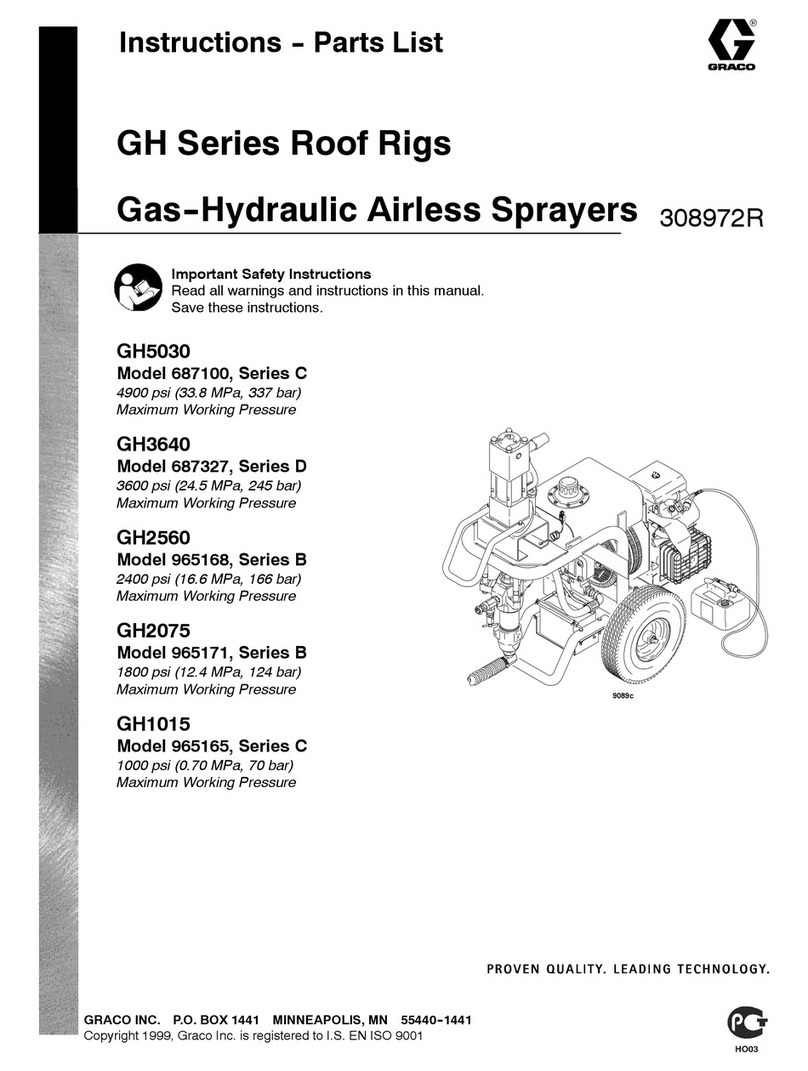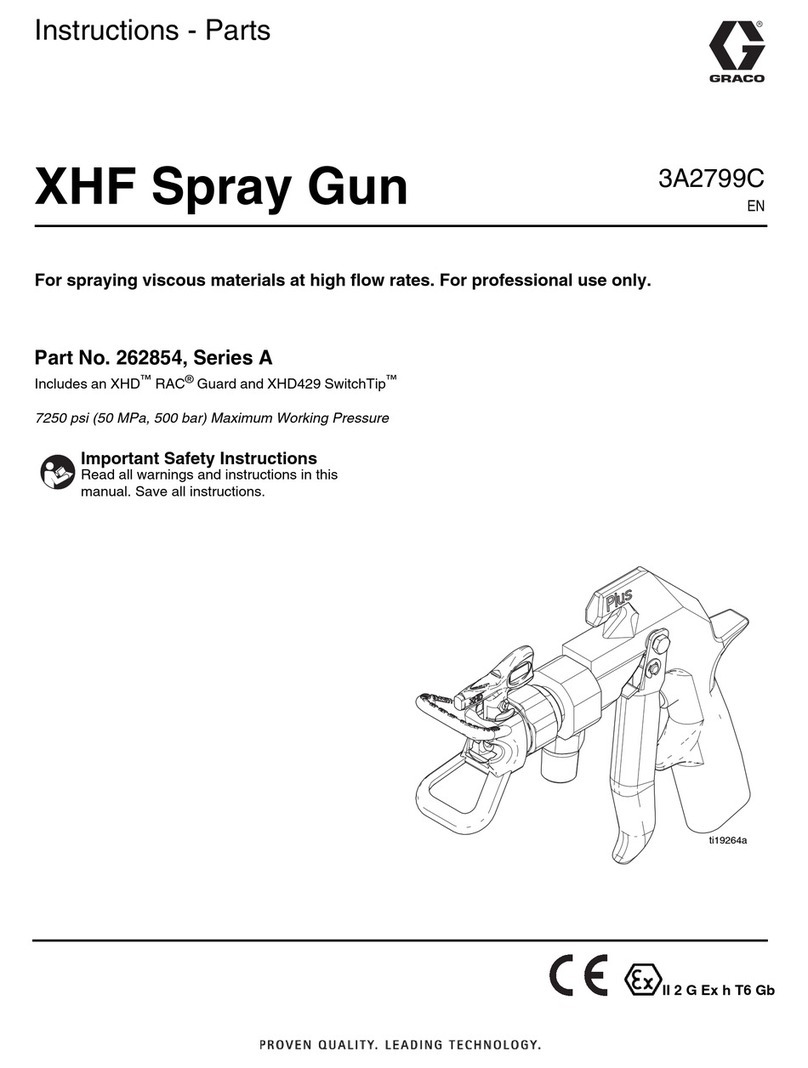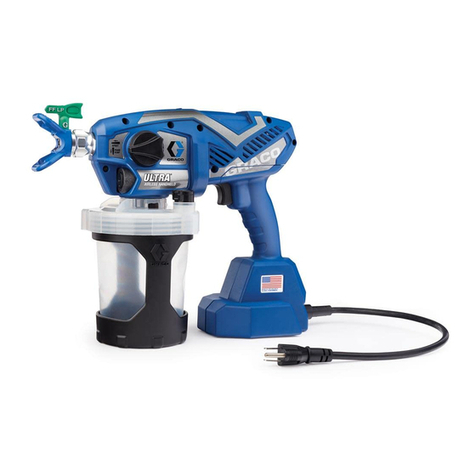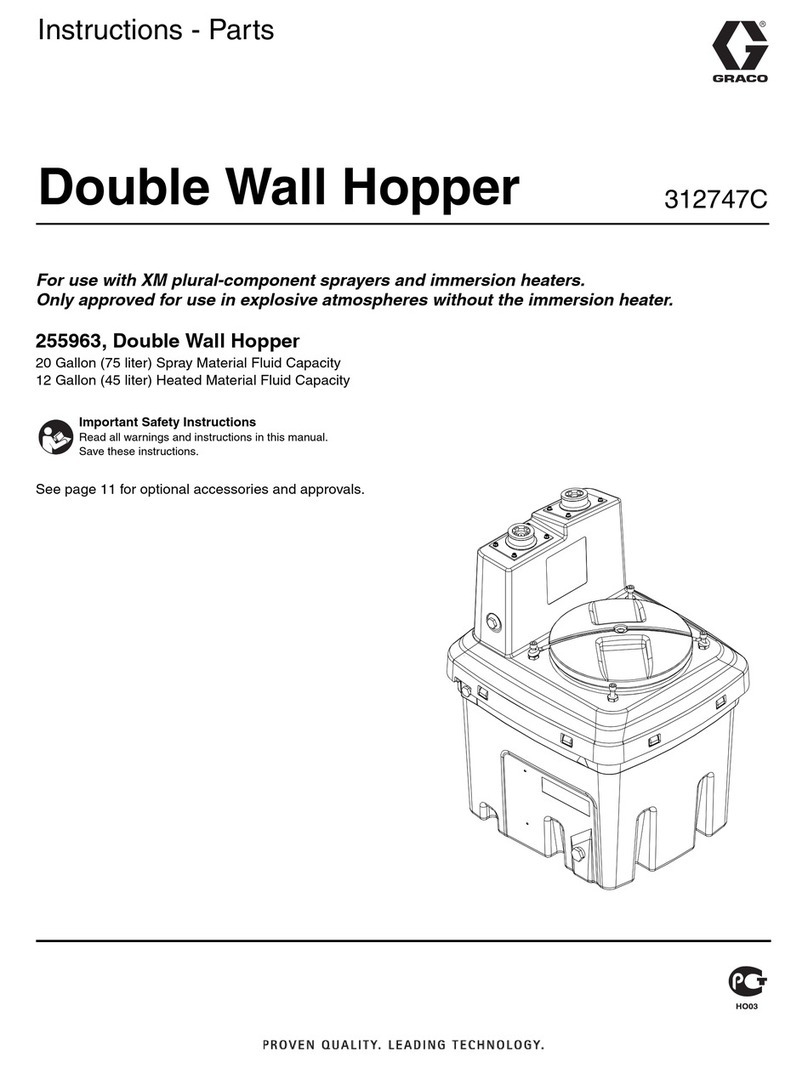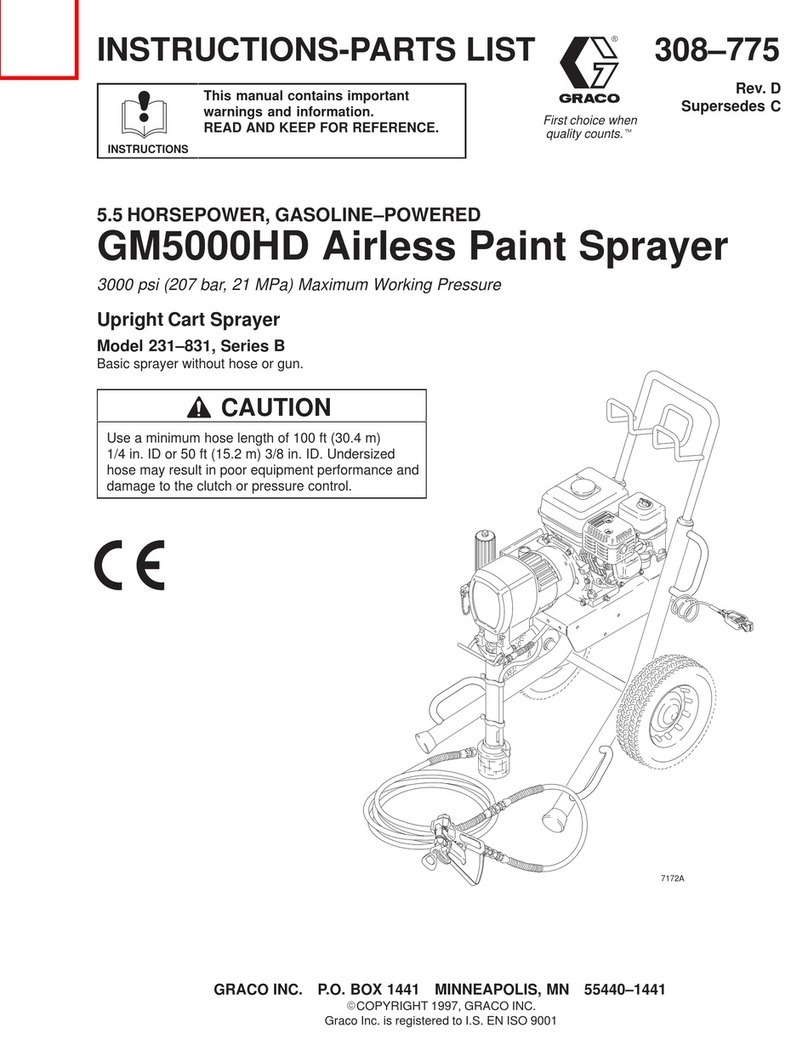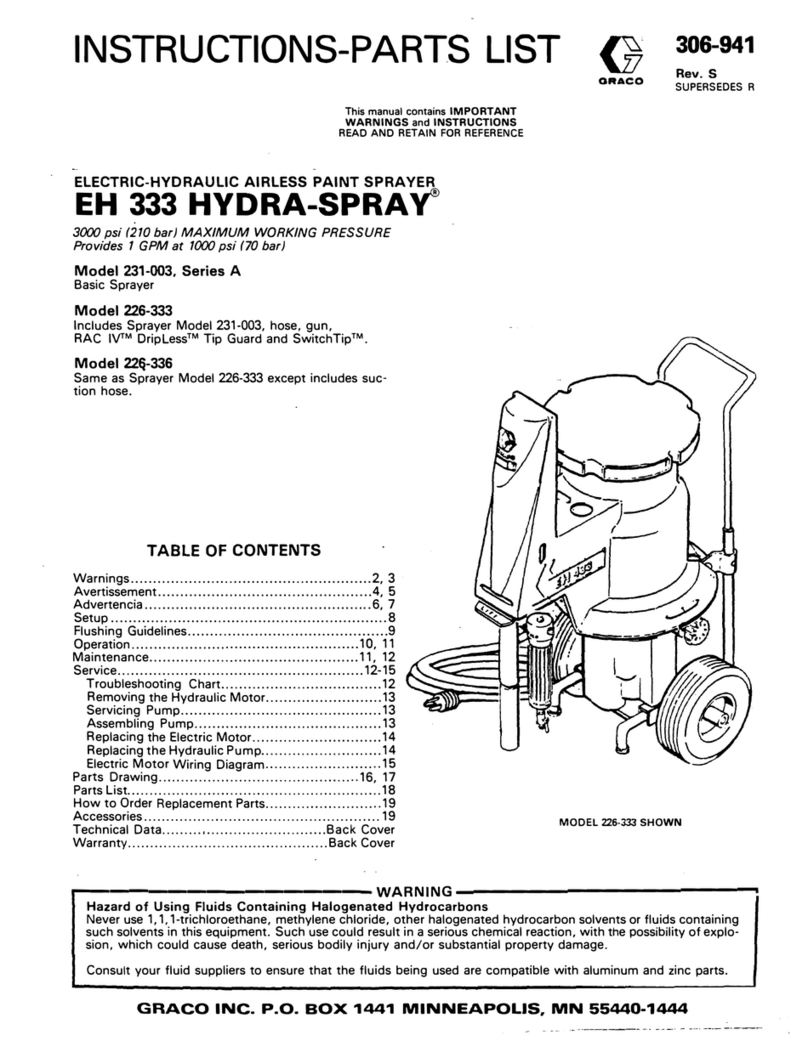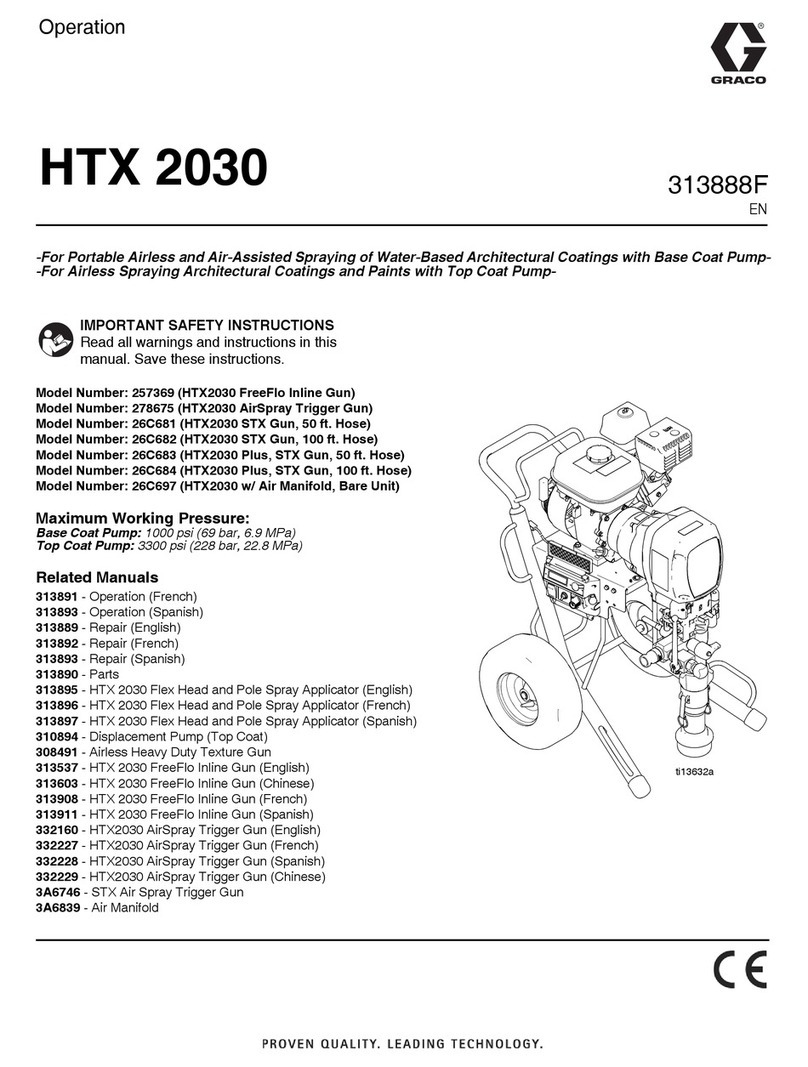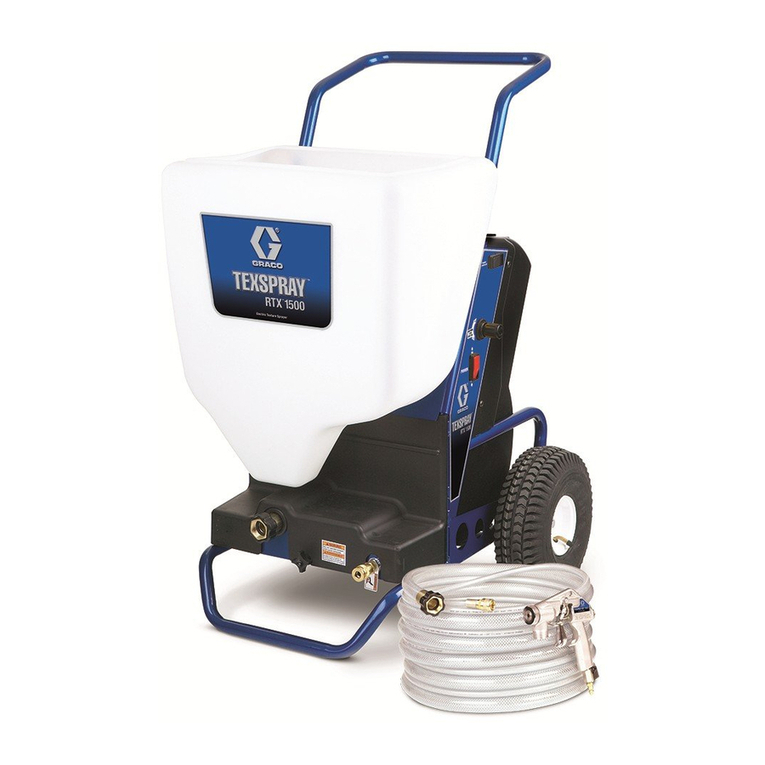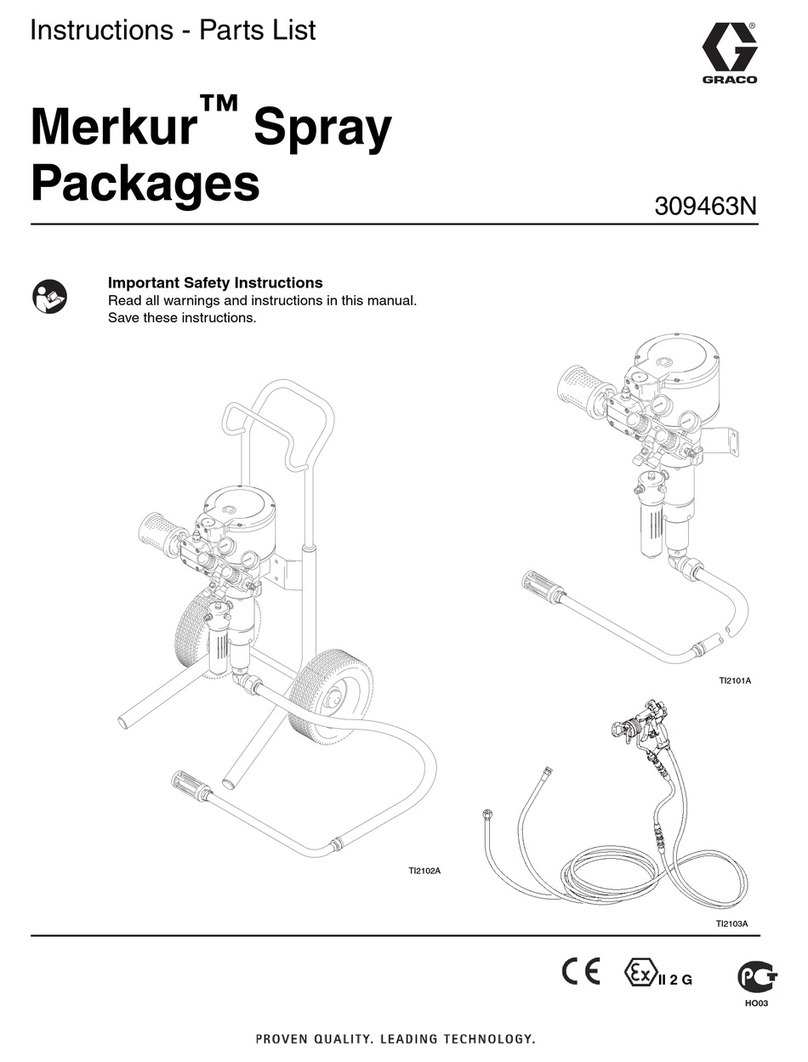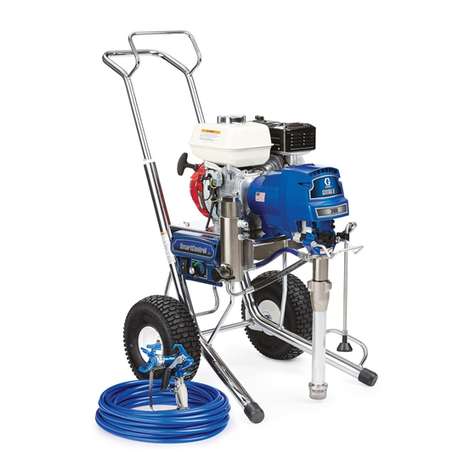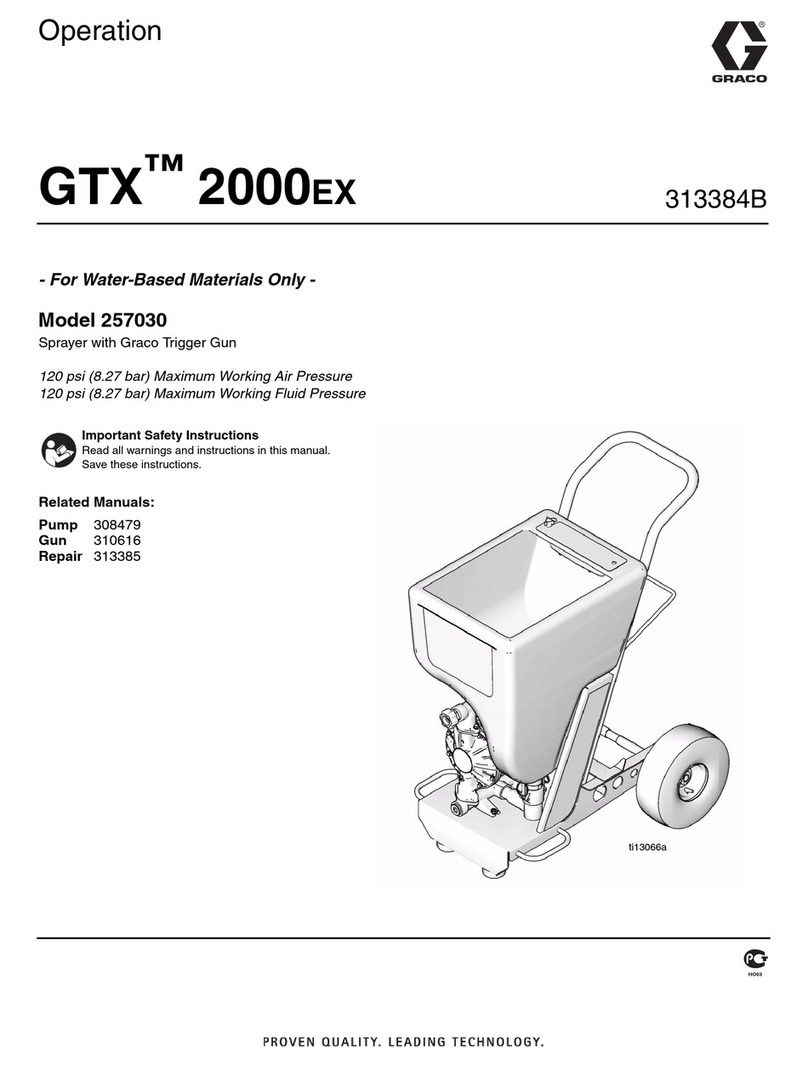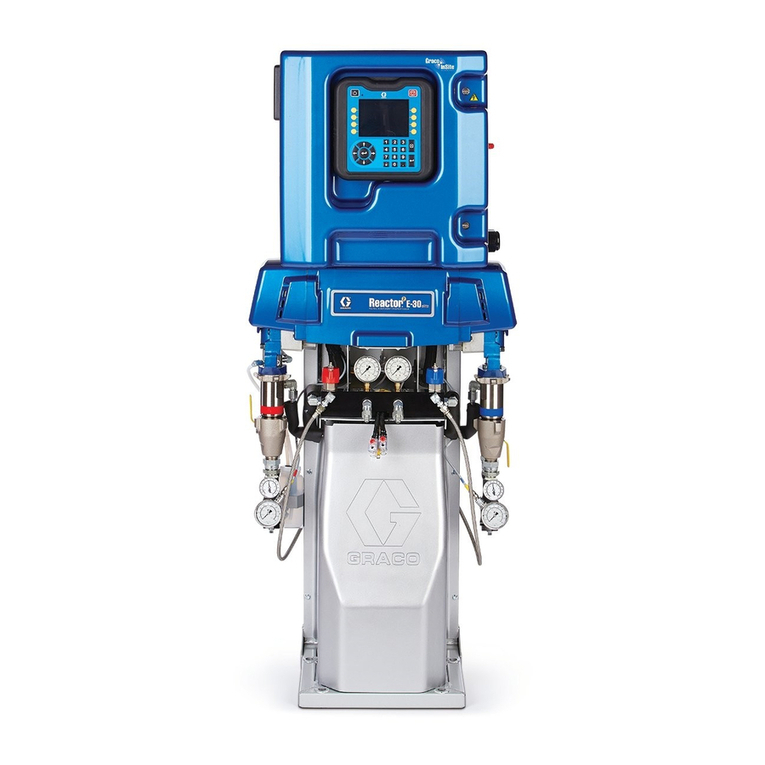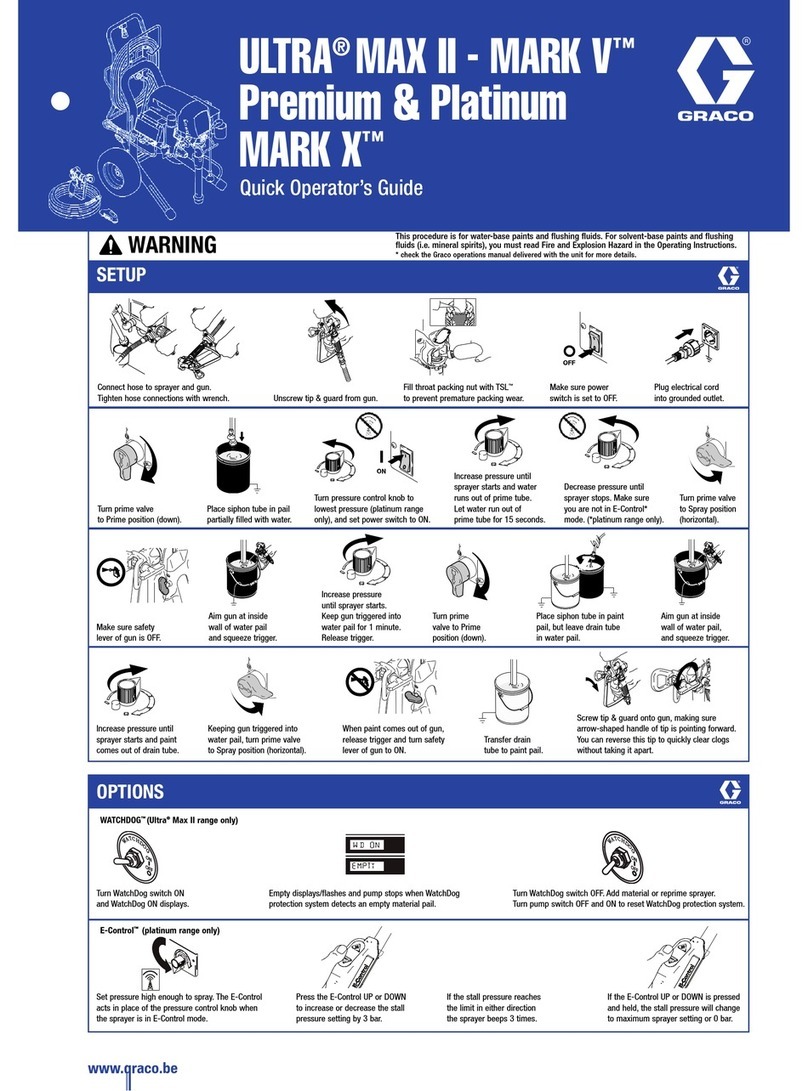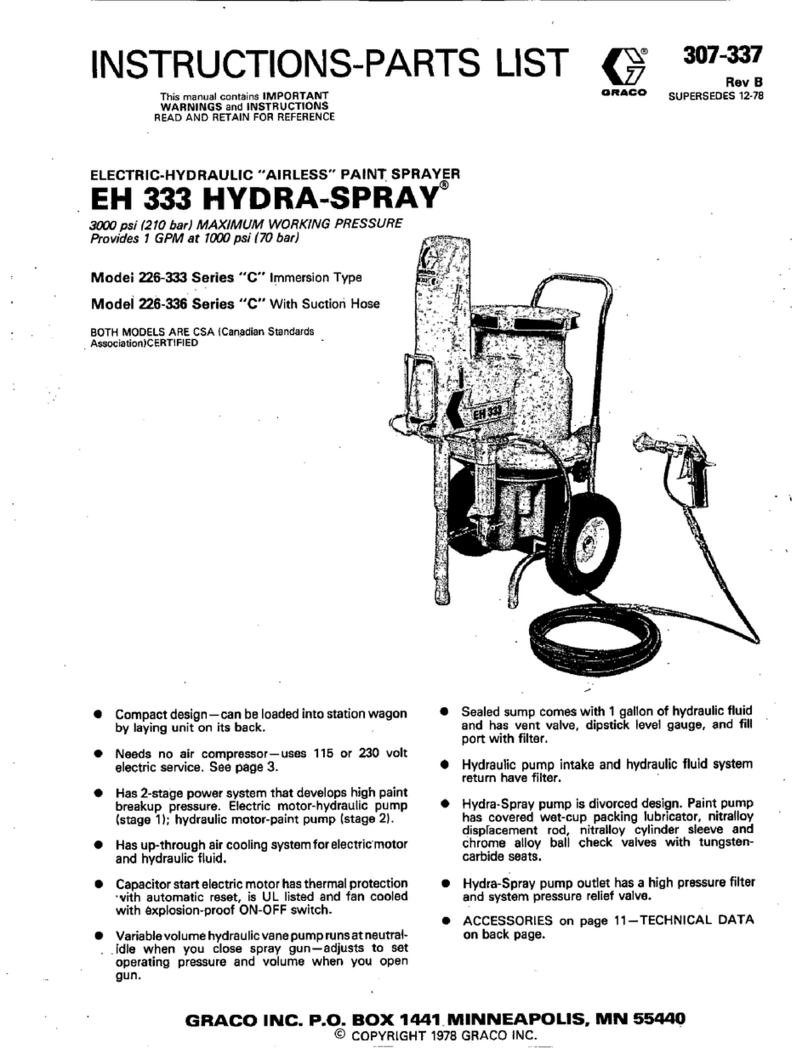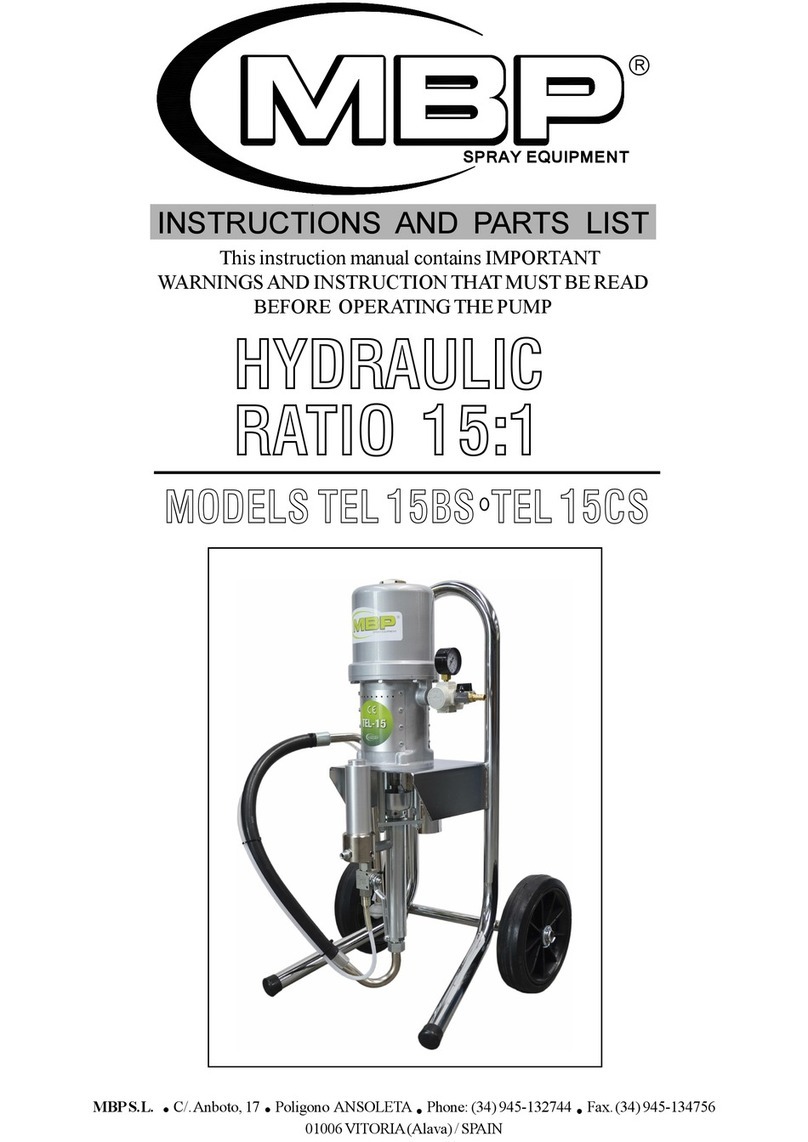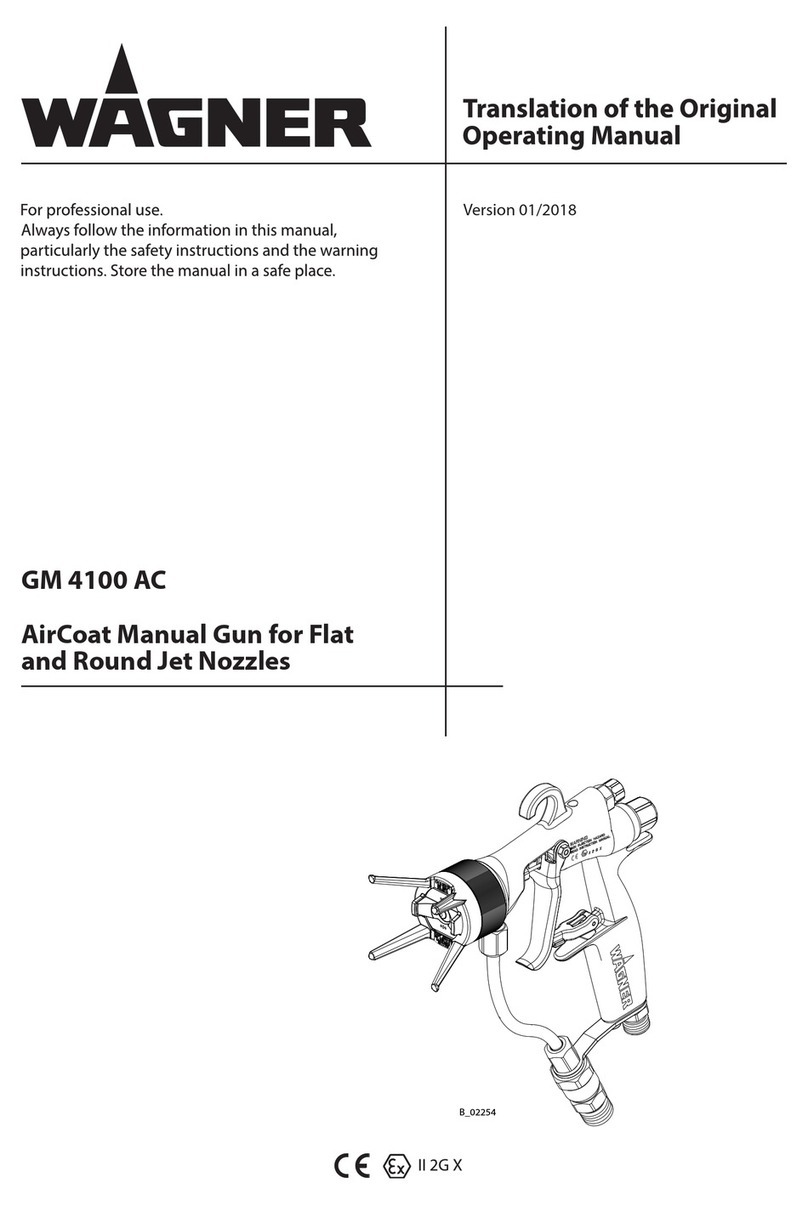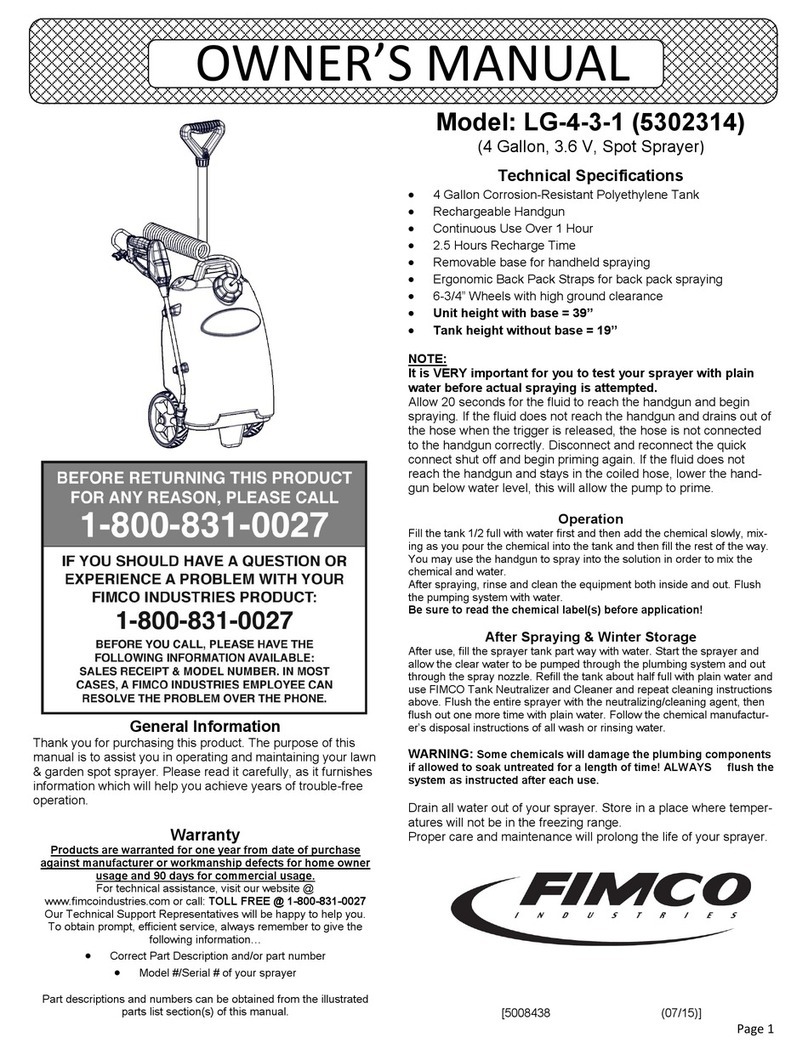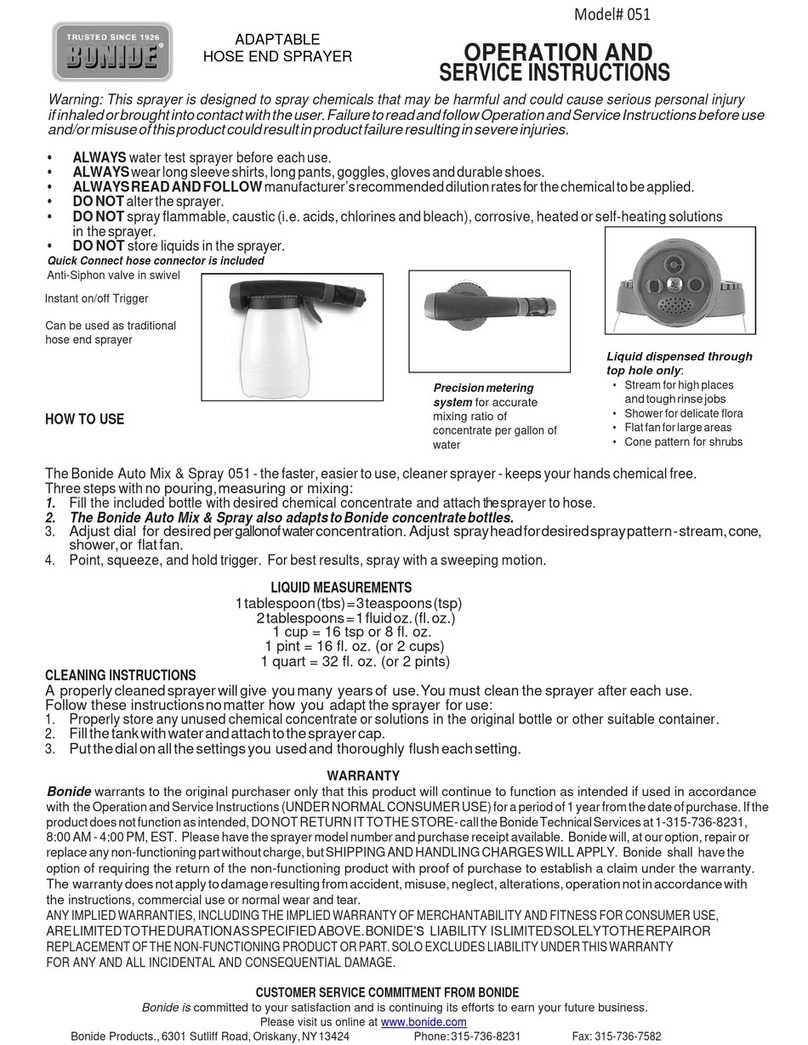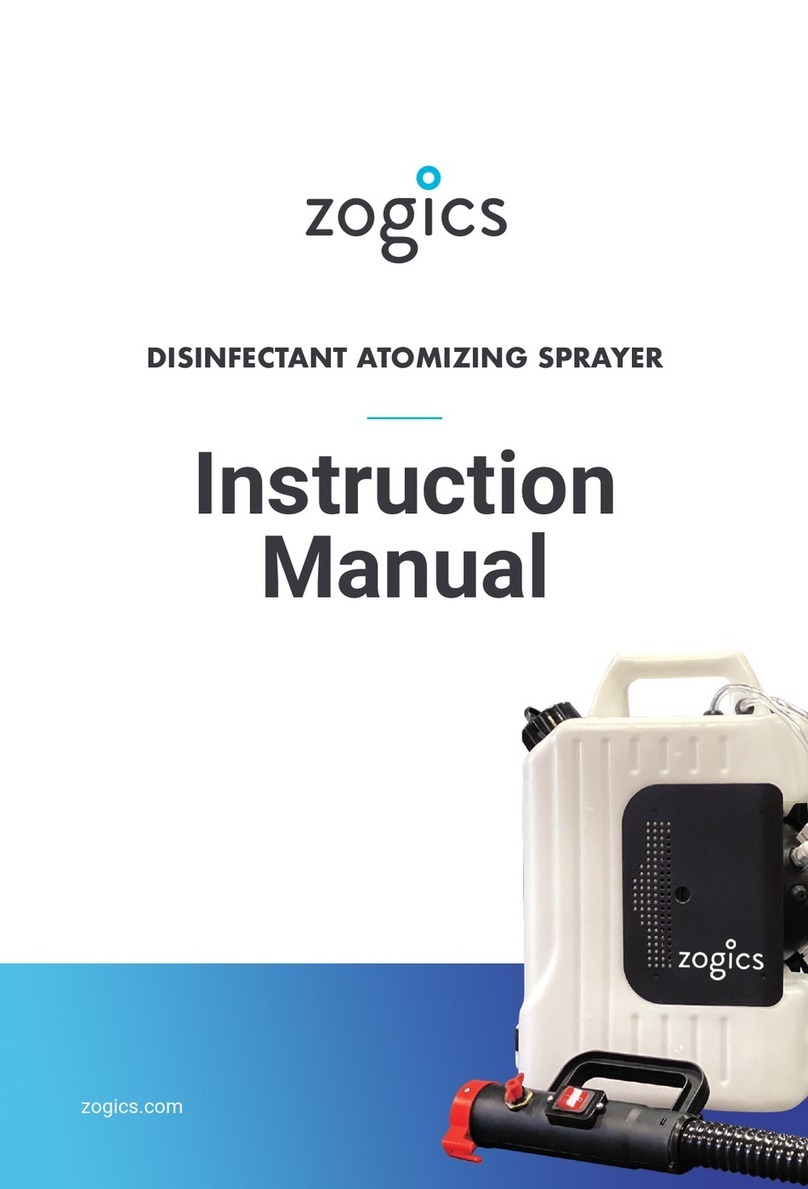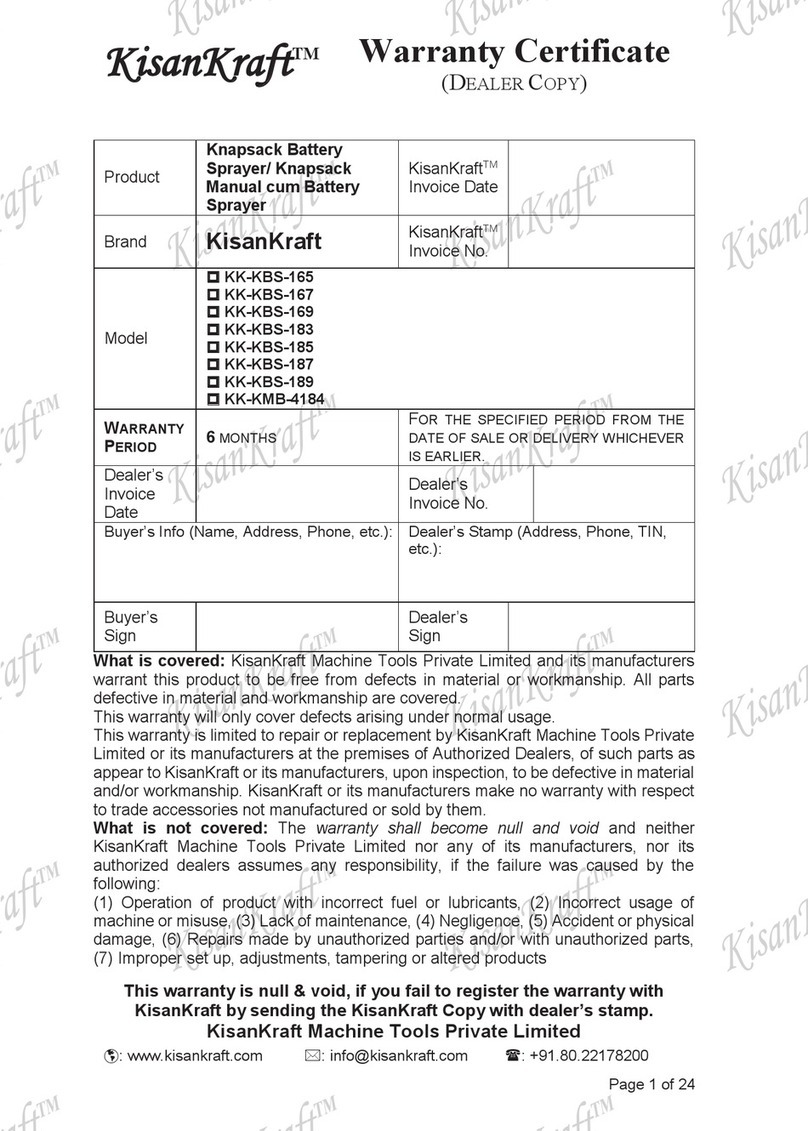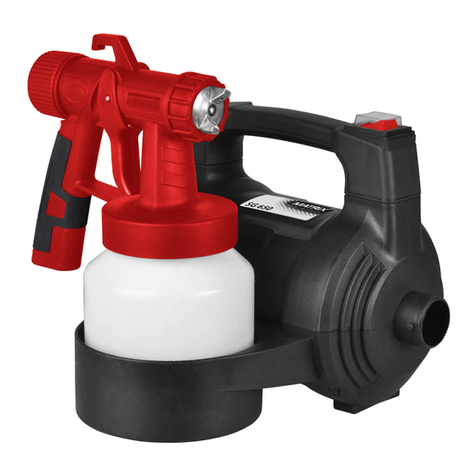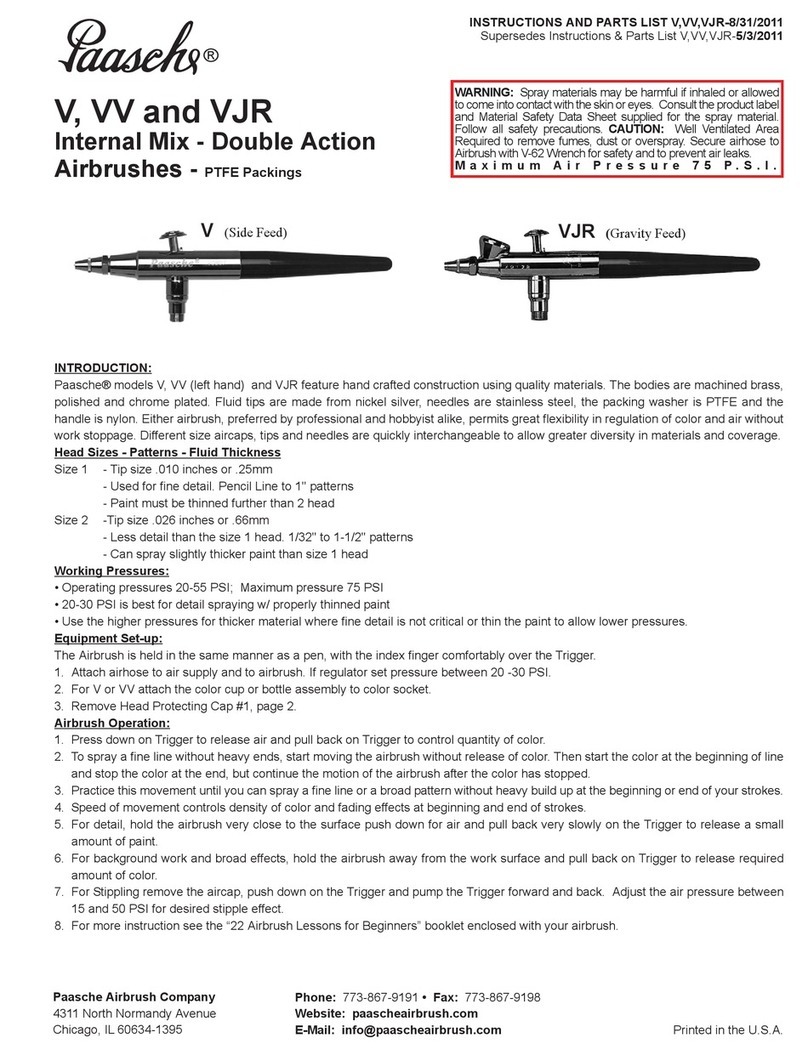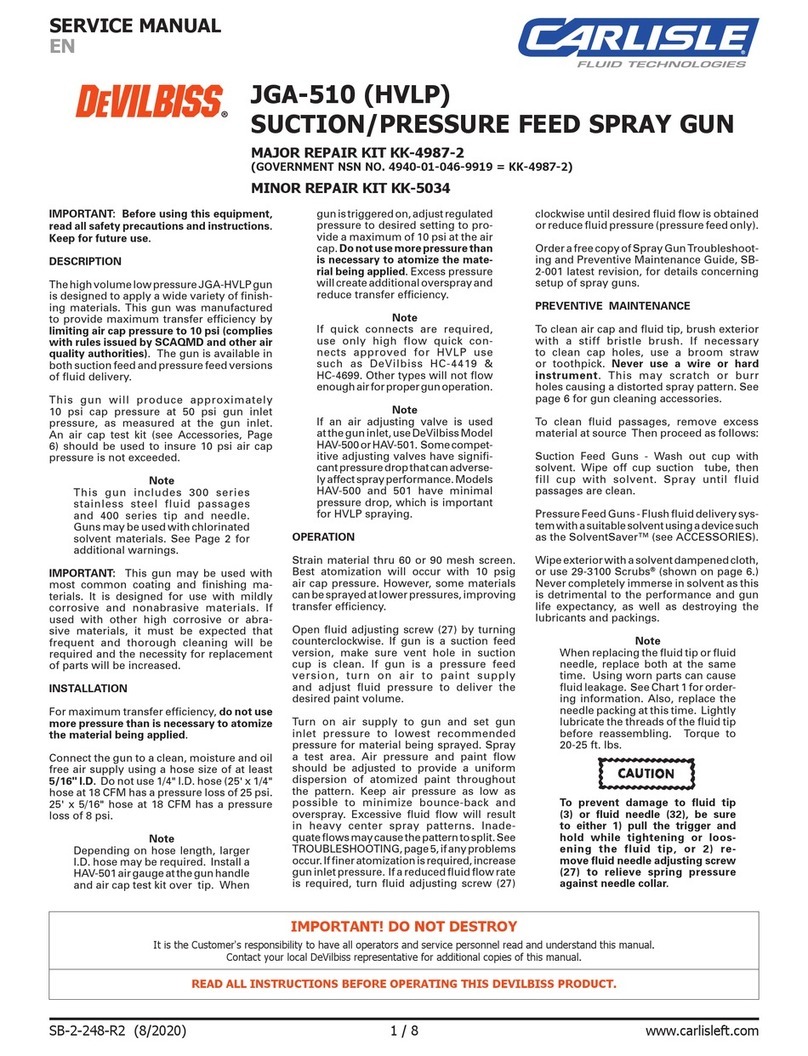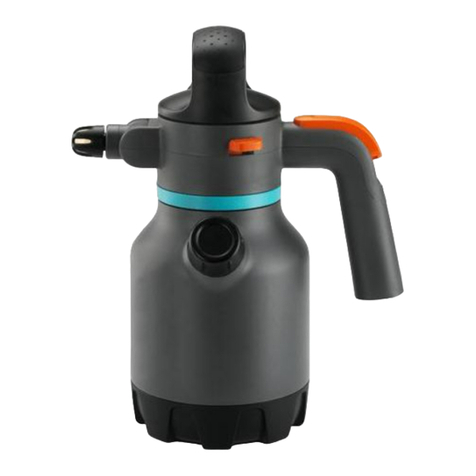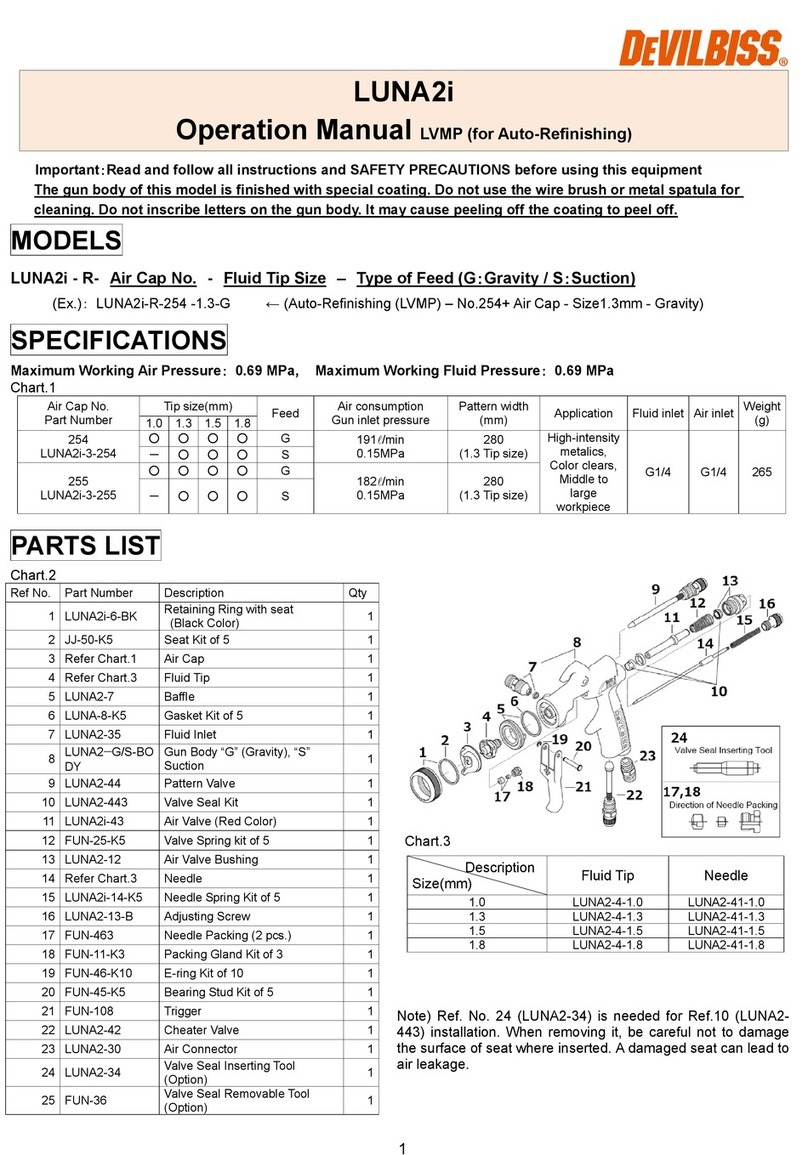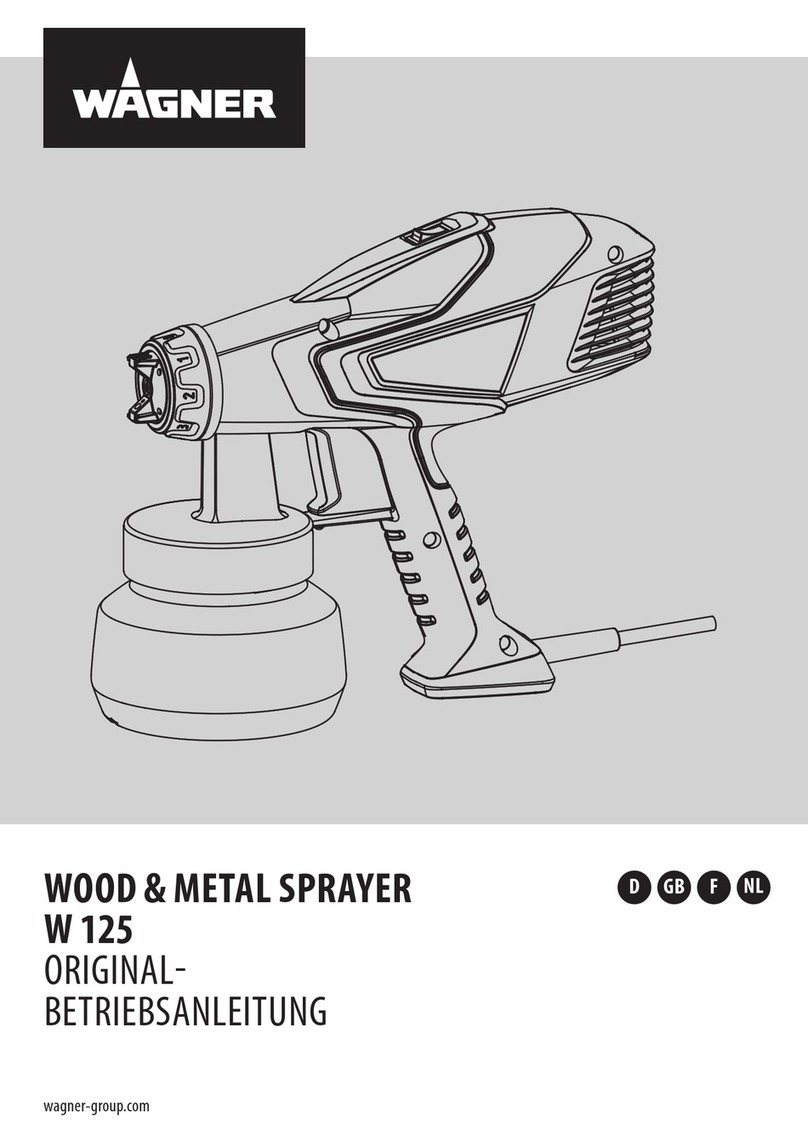
8 306-726
Operation
Pressure Relief Procedure
With the Evenflo control, its bypass valve, and the
pump Relax-A-Valve properly set, fluid pressure is
relieved from the pump and hose each time you re-
lease the gun trigger. Always engage the gun trigger
safety when you stop spraying. To relieve air pressure,
close the Evenflo regulators and open the bleed-type
master air valve.
WARNING
INJECTION HAZARD
If you suspect that the Evenflo system is
not properly set, or that pressure is not
fully relieved, the system pressure must
be manually relieved to prevent the system from
starting or spraying accidentally. Fluid under high
pressure can be injected through the skin and
cause serious injury. To reduce the risk of an injury
from injection, splashing fluid, or moving parts, fol-
low the Pressure Relief Procedure whenever you:
Dare instructed to relieve the pressure,
Dstop spraying,
Dcheck or service any of the system equipment,
Dor install or clean the spray tips.
1. Engage the spray gun or dispensing valve safety
latch.
2. Close the pump air regulator.
3. Close the master bleed-type air valve (required).
4. Disengage the gun or dispensing valve safety
latch.
5. Hold a metal part of the gun/valve firmly to a
grounded metal waste container and trigger to
relieve fluid pressure.
6. Engage the safety latch again.
7. Open the pump drain valve (required in your
system), having a container to catch the drainage.
NOTE: If your pump has a Relax-A-Valve set in the
automatic position, step 7 is not necessary.
8. Leave the drain valve open until you are ready to
spray again.
If you suspect that the spray tip or hose is completely
clogged, or that pressure has not been fully relieved
after following the steps above, very slowly loosen the
tip guard retaining nut or hose end coupling and relieve
pressure gradually, then loosen completely. Now clear
the tip or hose.
WARNING
Never operate the pump with the air motor plate
removed. Moving parts in the piston can pinch or
amputate fingers.
Startup
WARNING
To reduce the risk of serious injury whenever you
are instructed to relieve pressure, always follow the
Pressure Relief Procedure on page 8.
The pump was tested in oil, and some oil was left in
the pump to protect it from corrosion. if the oil will
contaminate the fluid your are pumping, flush it out.
To start the pump, close the fluid drain valve (H). Open
the bleed-type master air valves (A). Holding a metal
part of the spray gun/dispensing valve firmly against
the side of a grounded metal pail, hold the trigger open
while slowly opening the air regulator (E), Run the
pump slowly until all air is purged from the gun/valve.
Release the trigger and engage the safety latch (if
applicable).
Use the air regulator (E) to control fluid pressure and
pump speed. Always use the lowest pressure neces-
sary to get the desired results. Higher pressures cause
premature pump wear and spray tip wear, and usually
do not improve the spray pattern.
WARNING
To reduce the risk of overpressurizing your system,
which could result in component rupture and cause
serious injury, never exceed the maximum working
pressure of the lowest rated component in your
system. Lowering the air pressure to the motor will
proportionately lower the fluid outlet pressure from
the pump. Refer to the Technical Data on page 16
for the maximum air and fluid working pressure of
this pump.



